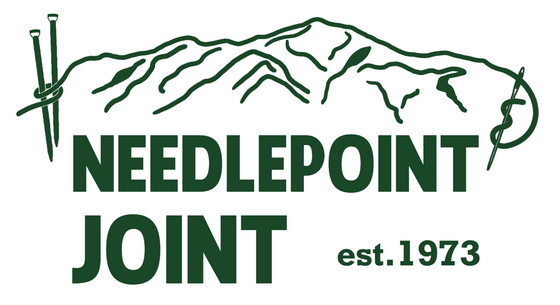Yarn Weight Information
This listing of yarn is included because sometimes there is confusion when patterns ask for a particular yarn type. British patterns often use terms which are different from American terms. Designations like 3-ply or 4-ply are misleading because a ply is not a particular size. The plies indicate the number of strands spun together to create the yarn. A worsted weight yarn may be designed using only one large ply. In this case, the effect is a homespun, country look. A D.K. weight yarn may be made from 6 or 8 very skinny plies or strands and still be medium weight. The following are the standard terms we use:
Lace Weight This is a very fine yarn that is often used for shawls. The gauge will usually be 8 stitches per inch—or more!— on a size U.S. 000-1 needle. We love Jaggerspun’s Zephyr yarn.
Fingering Weight A fine yarn worked on small needles: U.S. 1,2, or 3, to give about 7 stitches per inch. This is one of the most popular yarn weights sold in our shop and we have a lot of recommended fingering weight yarns.
Sock Yarn About the same as fingering weight. We use the term "sock yarn" to mean a blend of yarn that includes nylon for the purpose of making the finished product durable. Makes a lightweight sock.
Jumper Weight A British term for a lightweight yarn to be knit on a size U.S. 3 or 4 needle. This is a weight often specified for stranded Fair Isle sweaters. We recommend Jamieson and Smith’s 2 ply jumper weight.
Sport Yarn This yarn knits to about 6 stitches per inch and uses a U.S. 3-5 needle.
DK or Double Knitting This is a term that originated in Britain and is used by all types of manufacturers. It refers to a yarn size very close to a sport weight, but slightly heavier. The gauge is about 5 1/2 stitches per inch and is usually knit on a U.S. 6 needle.
Worsted Weight This is what is often considered ordinary knitting yarn. The gauge is roughly 5 stitches per inch on a size 7 or 8 needle. Some worsted may give a gauge of 4 or 4 1/2 stitches per inch and be knit on a 8 or 9. We consider these “heavy worsteds”. Worsted weight is the size of yarn most commonly used for afghans. We sell a lot of worsted weight yarn. It gives a good result to knitting time ratio while still yielding a product this isn’t overly bulky.
Aran Weight A British designation that means a worsted or heavy worsted weight yarn.
Chunky Yarns These yarns are thicker than worsted and knit to a gauge of 3-3.75 stitches per inch on a size U.S. 9-11 needle.
Bulky Yarns These yarns are larger yet than aran or chunky. They are worked on large needles with a US size of 11 or greater. There are lots of fun patterns using these large yarns. Know that the resulting project will be bulky, possibly heavy and very warm.
The following chart is displayed with permission from the Craft Yarn Council's www.yarnstandards.com

Gauge Swatching
Not everyone likes to make a gauge swatch. For a lot of projects where size is not critical (blanket, scarf, shawl, wash cloth), you don’t need to. An experienced knitter often can “eyeball” gauge enough to make a small project work (hat, sock, cowl), knowing that if it doesn’t go well, not a lot of stitching time is lost. But, if you are making something you want to fit, especially a sweater or other garment, we really, really, really suggest making a gauge swatch.
We pass on these wise words from Skacel:
How to swatch: Gauge is usually given for a 4" X 4" swatch. Cast on the expected number of stitches for the 4 inches plus an additional 4 stitches. Work 3 rows in garter stitch. Then work in requested stitch pattern, always knitting the first 2 and the last 2 stitches of every row. Work the correct amount of rows as given in the gauge. If a row count is not given, work for approximately 4 inches. Work 3 additional rows of garter stitch then bind off. Carefully measure your piece so that after treating, you will know how the swatch has changed size.
Treat the swatch as yarn care instructions suggest. If they say it is ok to machine wash and tumble dry, do it. If you are to hand wash and lay flat to dry, do that. If you plan on machine washing even if the care instructions advise against it, then machine wash the swatch. Check for color fastness, shrinkage and growth. Some swatches will grow (the stitches separate) when agitated in the machine. When the swatch is dry, measure between the edge stitches for stitch gauge, and between the garter rows for row gauge. Row gauge will be extremely important if you are knitting side to side or if your project has a lot of shaping. If your gauge is less than asked for increase your needle size accordingly. If it is greater than asked for decrease your needle size, and work another swatch.
You may acquire a collection of swatches: Use swatches to make a quilt. Swatches make great patches on sweatshirts or jeans. Swatches are excellent pockets--a great way to adorn your garments. Take two swatches, add two sleeves and you've got yourself a teddy or doll sweater. Swatches travel easily--carry yours with you when looking for buttons.
